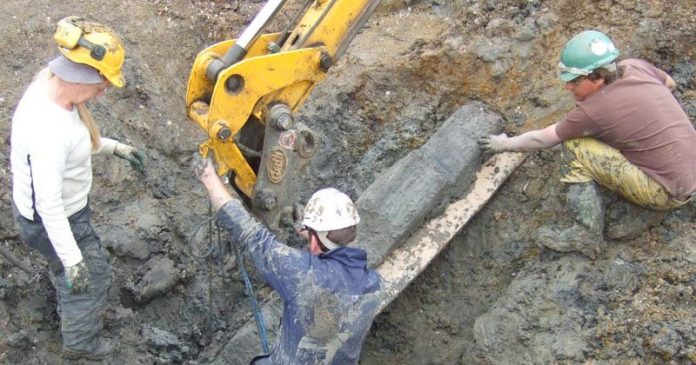Developers are major benefactors of archaeology – responsible for paying for unearthing and recording large swathes of archaeology that would otherwise remain hidden and lost. Current indications are that up to 95% of current discoveries come to light as a result of commercial land development in the UK. ( based on information including Archaeological Investigations Project (AIP) and Discovery and Excavation Scotland (DES) )
Developers – are they their own work enemy?
A Constraints Report will often contain a significant educational element within it – a requirement to inform as many as possible about significant finds made during a project. The benefits of doing this can easily be overlooked by developers. This is positive PR and publicity to be gained.
Developers can demonstrate that they are actually the “good guys” in all this. They are enabling the acquisition of knowledge – safeguarding heritage as it were – not just pouring concrete over everything!
In this way, the demands of the Constraints Report can actually become beneficial from the point of view of public relations.
Help for developers
They need the right people to look after their interests, to help them respond to a potentially rapidly changing set of circumstances and deal with the risks.
Oxfordshire County Council’s planning guidance is broadly similar to many across the country, including many important elements that can restrict developers who do not work with relevant archaeologically-focussed partners.
The Guidance includes the following:-
“An Archaeological Evaluation. Where the site is thought to have archaeological potential you may be required to carry out an archaeological field evaluation. This evaluation will consist of an investigation to identify whether or not archaeological remains are present on the site and if they are to provide sufficient information to assess their significance. The evaluation can consists of a series of non-invasive techniques such as field-walking and geophysical survey but is also likely to require a number of trenches excavated across the development area to sample to potential archaeological deposits. If you are required to undertaken an evaluation you should contact us and we will provide a design brief which will set out what is required.
“The field work will need to be undertaken by a professional archaeological company experienced in this type of work.”
Next time a developer becomes involved in archaeology – make sure they are aware of all the positive benefits, where finding archaeology is (when carried out in advance of construction) something they should see as an asset to the development and not a hindrance.
Edited from blogpost by Wardell Archaeology, Helen Martin-Bacon


